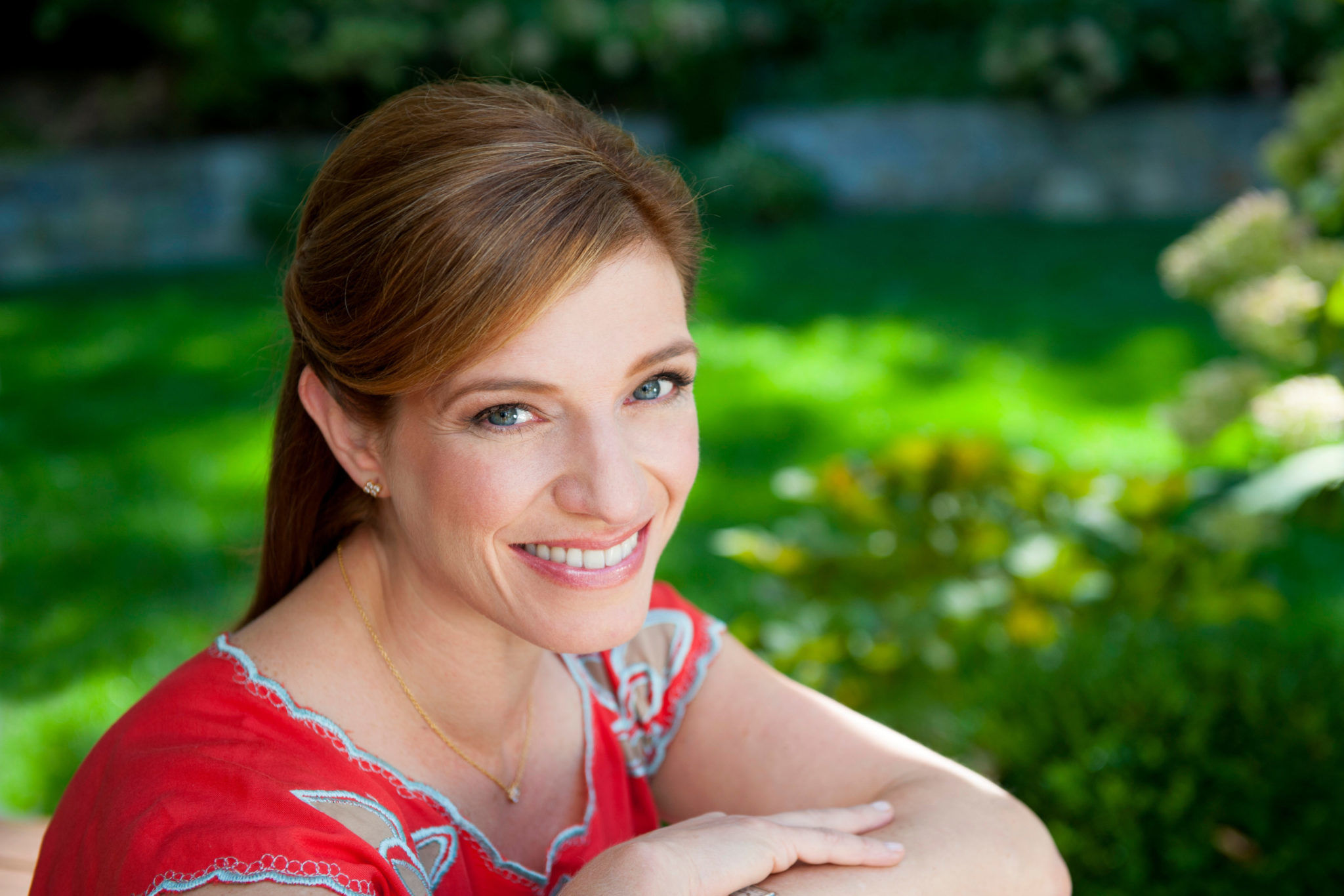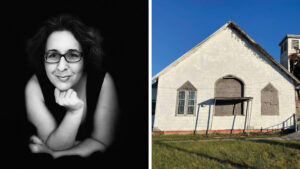Foodie Pati Jinich combines Jewish and Mexican cuisines on TV and in cookbooks.
“I love egg salad sandwiches on challah,” gushes Pati Jinich, the Emmy Award- and James Beard-nominated chef and food writer whose TV series “Pati’s Mexican Table” airs on PBS. “Every Friday, all I wish for is leftover challah for my sandwich and French toast. It reminds me of both of my Ashkenazi grandmothers.”
Jinich, who grew up in a Jewish family in Mexico City and now lives in Chevy Chase with her own family, admits to being obsessed with food.
“I love chocolate babka. It comforts me,” says Jinich, 45, whose Shabbat dinners typically include matzoh ball soup alongside a traditional Mexican dish.
Cooking both Mexican and Mexican-inflected Jewish foods has been Jinich’s passion since 1996 when she relocated to the United States. After working as a policy analyst for a think tank in Washington, D.C., Jinich abandoned the boardroom for the kitchen.
For the past decade, Jinich has been the chef-in-residence at the Mexican Cultural Institute in D.C., where she teaches classes four times a year. She’s also the author of two best-selling cookbooks, “Pati’s Mexican Table: The Secrets of Real Mexican Home Cooking” and “Mexican Today: New and Rediscovered Recipes for Contemporary Kitchens” (both by Rux Martin/Houghton Mifflin Harcourt).
Although Jinich’s parents raised her and her sisters with minimal connection to Mexico’s Jewish community, they attended weekly Shabbat dinners with her paternal grandparents who immigrated to Mexico from Poland to escape pogroms. (According to the World Jewish Congress, there are 40,000 Jews living in Mexico, the majority in Mexico City, descended primarily from 19th- and 20th-century emigrants from Eastern Europe.)
Jinich reconnected with her Jewish food roots after she offered a Mexican-Jewish cooking class as part of a program hosted by a Lubavitch center.
“I went back to my mom and dad and asked them about my grandparents,” says Jinich, who recalls eating her grandmother’s version of gefilte fish, which is smothered with tomato sauce and punctuated with salty olives in a style known as a la Veracruzana. She also remembers her grandmother adding Yiddishe touches like gribenes (rendered chicken skin) and hard-boiled eggs to guacamole.
Jinich, who visits Mexico several times a year, says that Mexican and Jewish mothers have much in common.
“Jewish and Mexican mothers are overprotective of their children and are crazy about food,” says Jinich, whose sons, Alan, Sami and Julian, and husband, Daniel, often make guest appearances on her TV show.
Jinich also finds it’s common for women in both Jewish and Mexican cultures to take pride in their kitchens. For Jinich that means insisting that her TV show be filmed in her home kitchen and not in a studio.
“My kitchen is filled with my family’s stories,” says Jinich, whose kitchen has many mementos from Mexico. Among the kitchen items dear to Jinich are her grandmother’s lime squeezer and her mother’s comal, a smooth, flat griddle typically used in Mexico and Central America to cook tortillas, toast spices, sear meat and prepare food.
Jinich worries that too many Americans still stereotype Mexican food, just as they tend to stereotype Jewish cooking. To counter that, the first season of “Pati’s Mexican Table” included an episode that focused on the Sephardic and Lebanese influences on Mexican cooking.
A prime example: Jinich’s signature recipe for chicken with tamarind, apricots and chipotle sauce. Another of Jinich’s Mexican-Jewish recipes is buñuelos, a fried dough ball that Mexicans and Jews in Latin America prepare for Chanukah in place of latkes.
A self-confessed foodie, Jinich says her favorite Jewish holiday is Yom Kippur, ironically a day on which the consumption of food and drink are forbidden. “I love Yom Kippur. I fast because it connects me to my Jewish heritage,” she says. “It also forces me to stop. I am an insane workaholic.”
Jinich began hosting Yom Kippur break-fast meals at her home because she wanted a sit-down dinner rather than a more casual American buffet-style experience. “For me, a hot meal defines Yom Kippur [break-fast],” says Jinich. “It’s like Thanksgiving.”
For recipes from Pati Jinich, visit patijinich.com.
Jill Yesko is a Baltimore-based freelance writer.
[box type=”shadow”]Read more fun features from our first annual food issue now!
Tasty Times in Charm City, by Randi Rom
Baltimore-Area Chefs Share Their Favorite Recipes, by Randi Rom
From Gefilte Fish to Guacamole, by Jill Yesko
The Deli as a Symbol of the American Jewish Experience, by Richard Gorelick
A Farm-to-Table Thanksgiving Feast, by Joshua Rosenstein
Don’t Forget the Sides!, by Huppit Bartov Miller
The Siren Song of Shakshuka, by Amanda Krotki
Also see:
Food, Glorious Food!, by Alan Feiler
Two Decades of Dinners, by Dana Hemelt
Baltimore Hunger Project Strives for Full Bellies, by Lynne B. Kahn
Choosing Sides, by The Classic Catering People





